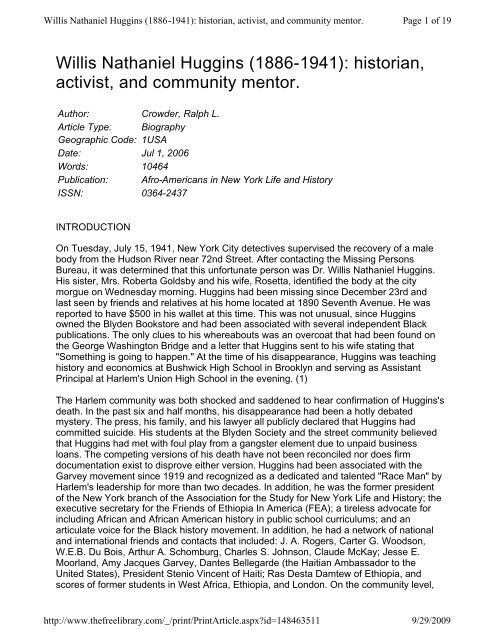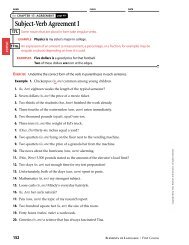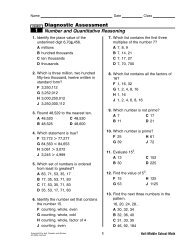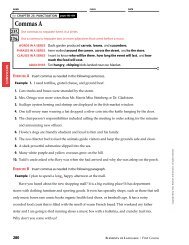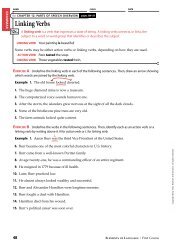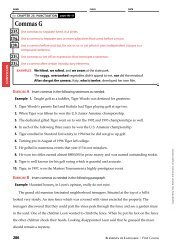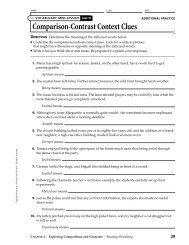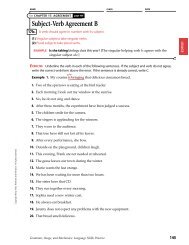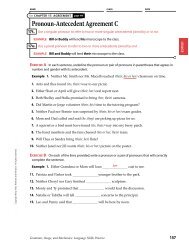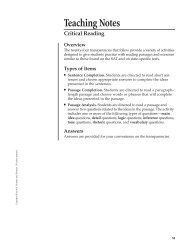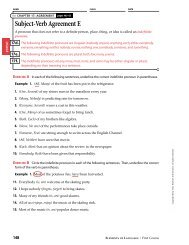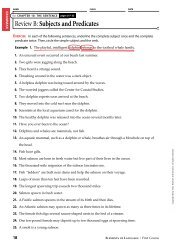Willis Nathaniel Huggins_Bio_GR.pdf - Azinga Cartoons
Willis Nathaniel Huggins_Bio_GR.pdf - Azinga Cartoons
Willis Nathaniel Huggins_Bio_GR.pdf - Azinga Cartoons
You also want an ePaper? Increase the reach of your titles
YUMPU automatically turns print PDFs into web optimized ePapers that Google loves.
<strong>Willis</strong> <strong>Nathaniel</strong> <strong>Huggins</strong> (1886-1941): historian, activist, and community mentor.Page 1 of 19<strong>Willis</strong> <strong>Nathaniel</strong> <strong>Huggins</strong> (1886-1941): historian,activist, and community mentor.Author: Crowder, Ralph L.Article Type: <strong>Bio</strong>graphyGeographic Code: 1USADate: Jul 1, 2006Words: 10464Publication: Afro-Americans in New York Life and HistoryISSN: 0364-2437INTRODUCTIONOn Tuesday, July 15, 1941, New York City detectives supervised the recovery of a malebody from the Hudson River near 72nd Street. After contacting the Missing PersonsBureau, it was determined that this unfortunate person was Dr. <strong>Willis</strong> <strong>Nathaniel</strong> <strong>Huggins</strong>.His sister, Mrs. Roberta Goldsby and his wife, Rosetta, identified the body at the citymorgue on Wednesday morning. <strong>Huggins</strong> had been missing since December 23rd andlast seen by friends and relatives at his home located at 1890 Seventh Avenue. He wasreported to have $500 in his wallet at this time. This was not unusual, since <strong>Huggins</strong>owned the Blyden Bookstore and had been associated with several independent Blackpublications. The only clues to his whereabouts was an overcoat that had been found onthe George Washington Bridge and a letter that <strong>Huggins</strong> sent to his wife stating that"Something is going to happen." At the time of his disappearance, <strong>Huggins</strong> was teachinghistory and economics at Bushwick High School in Brooklyn and serving as AssistantPrincipal at Harlem's Union High School in the evening. (1)The Harlem community was both shocked and saddened to hear confirmation of <strong>Huggins</strong>'sdeath. In the past six and half months, his disappearance had been a hotly debatedmystery. The press, his family, and his lawyer all publicly declared that <strong>Huggins</strong> hadcommitted suicide. His students at the Blyden Society and the street community believedthat <strong>Huggins</strong> had met with foul play from a gangster element due to unpaid businessloans. The competing versions of his death have not been reconciled nor does firmdocumentation exist to disprove either version. <strong>Huggins</strong> had been associated with theGarvey movement since 1919 and recognized as a dedicated and talented "Race Man" byHarlem's leadership for more than two decades. In addition, he was the former presidentof the New York branch of the Association for the Study for New York Life and History; theexecutive secretary for the Friends of Ethiopia In America (FEA); a tireless advocate forincluding African and African American history in public school curriculums; and anarticulate voice for the Black history movement. In addition, he had a network of nationaland international friends and contacts that included: J. A. Rogers, Carter G. Woodson,W.E.B. Du Bois, Arthur A. Schomburg, Charles S. Johnson, Claude McKay; Jesse E.Moorland, Amy Jacques Garvey, Dantes Bellegarde (the Haitian Ambassador to theUnited States), President Stenio Vincent of Haiti; Ras Desta Damtew of Ethiopia, andscores of former students in West Africa, Ethiopia, and London. On the community level,http://www.thefreelibrary.com/_/print/PrintArticle.aspx?id=1484635119/29/2009
<strong>Willis</strong> <strong>Nathaniel</strong> <strong>Huggins</strong> (1886-1941): historian, activist, and community mentor.Page 4 of 19representing African American and particularly Harlem's Black community. (9)<strong>Huggins</strong> was a perfect choice for this international assignment. He had recently completedhis doctorate at Fordham University, he had often lectured on Ethiopian history at theHarlem YMCA, and his bookstore was a storehouse of Africana information. He wasknown for promoting African Studies in the public school system, and he had publiclychallenged the school board's failure to institute courses on African civilizations. As aGarveyite, his ties to Ethiopia were solidified during the glory days of the UNIA influenceupon the Harlem community. <strong>Huggins</strong> had coordinated a Harlem visit of Ethiopiandiplomats while the delegation was in the United States on official business and, in 1932,he had developed a friendship with Ras Desta Damtew, the governor of SidamoProvince and son-in-law to Emperor Haile Selassie. In addition, from the PCDE's inceptionin February 1935, <strong>Huggins</strong> had been praised for his dedication, hard work, and his abilityto coordinate Black and interracial organizations concerned about Italian aggressiontoward Ethiopia. (10)In route to Switzerland, <strong>Huggins</strong> conferred with Ethiopian officials and Europeansupporters in London and Paris. In Paris, <strong>Huggins</strong> met with Minister Tecle Hawariate, andin London, he met with William H. Moody, a Jamaican national and director of the Leagueof Colored Peoples of the World, Wargneh Martin, the Ethiopian minister to Great Britain,and Quaker leaders who were considered influential with the British parliament. <strong>Huggins</strong>was able to meet with the Ethiopian minister to Britain through exploiting his contacts withC.L.R. James, the Trinidadian activist and founder of the London-based InternationalAfrican Friends of Abyssinia, Amy Jacques Garvey, and Lapido Solanke, leader of theWest African Students Union. After meeting with Minister Martin on August 7, 1935,<strong>Huggins</strong> received the Ethiopian's government authorization to solicit "medical supplies,nurses, doctors, veterinarians, and other trained civilian personnel." Martin alsoencouraged <strong>Huggins</strong> to campaign for a "public loan arranged through ... a reputablebanking house." All African Americans who decided upon relocation would be "expected tojoin the government's effort to build the Ethiopia of the future." Martin concluded a publicinterview by stating "Dr. <strong>Huggins</strong> has my full approval to proceed in the organization ofsuch activities in connection with committees which may be arranged." (11)On August 15, 1935, after conferring with Ethiopian representatives in London and Paris,<strong>Huggins</strong> spoke before a committee of the secretariat of the League of Nations. Hispresentation called for the League to intercede and restrain Italian aggression and preventany invasion of Ethiopia. <strong>Huggins</strong> began his plea to this international body by declaring,"Africans and persons of African descent throughout the world, have always looked withpride at the Empire of Ethiopia, which alone of all ancient empires of black men in Africa,still maintains its independence." The concentration of Italian "men and munitions on theEthiopian frontier" according to <strong>Huggins</strong>, "is viewed with righteous indignation by theblacks of the western world that are bound by racial kinship to the ancient and illustriousEthiopian people." He further argued that an invasion and defeat of Ethiopia wouldthreaten world peace, encourage the spread of fascism, make a mockery of Christianprinciples, and "increase the guilt of modern Christian nations" who had participated in thehistorical rape of Africa and the enslavement of "millions of her children." <strong>Huggins</strong> calledfor the League to "act decisively and resolve the Italo-Ethiopian dispute peacefully." Hispresentation was concise; it linked the destiny of Ethiopia with the African Diaspora andclearly identified Italy's aggression as a critical challenge to the League's goals ofmaintaining world peace and justice. (12)http://www.thefreelibrary.com/_/print/PrintArticle.aspx?id=1484635119/29/2009
<strong>Willis</strong> <strong>Nathaniel</strong> <strong>Huggins</strong> (1886-1941): historian, activist, and community mentor.Page 5 of 19When <strong>Huggins</strong> returned to Harlem in late August 1935, he launched a campaign toorganize African American communities throughout the country. The national office of theall Black FEA was established on Harlem's Seventh Avenue and by December, theorganization reported 106 local chapters in nineteen cities. In addition, the FEA hadaffiliated itself with a collection of national and international organizations that included: theAssociation for the Study of Negro Life and History; the Ethiopia Research Council; theAmerican Pro-Falasha Committee; the Universal Ethiopian Students' Association; theInternational African Friends of Ethiopia (London); La Revue de Monde Noir (Paris); theWomen's International League for Peace and Freedom (Geneva); and Jeunes Ethiopienes(Addis Ababa). During the first months of Italy's invasion of Ethiopia, Harlem's activistcommunity acknowledged the FEA as the most important of the "black Ethiopian aidsocieties." In addition, through his presentation to the League of Nations, his efforts toorganize African American support of Ethiopian resistance, and by winning theendorsement of Ethiopian ministers, <strong>Huggins</strong> had ushered Black America into anunprecedented era of international influence and diplomacy. (13)In November 1935, George Schuyler, the conservative Black journalist, praised <strong>Huggins</strong>and the FEA. "Dr. <strong>Huggins</strong> is a cultured, accomplished, brilliant and honest Negro,"according to Schuyler, "who for very long has seen clearly the fundamental issues at thebottom of world wide imperialism from the view point of the Negro." As <strong>Huggins</strong> waspraised in Black newspapers, celebrated on the lecture circuit, and daily noticed byHarlem's working class, he gradually opposed communist involvement in the Ethiopian aidcampaign. He had previously established a working relationship with the communistsduring his association with the PCDE. As his commitment to "united front" politicsdeclined, old tensions that characterized the clash between Garveyites and the New YorkMarxist community led to communist efforts to discredit <strong>Huggins</strong>. He had solid nationalistcredentials stretching back to early years of the Garvey movement and he enjoyed thesupport of moderate Black organizations such as the NAACP and the National UrbanLeague; however, <strong>Huggins</strong> was vulnerable on the use and allocation of the funds collectedby the FEA. (14)"The extent of fund raising by the FEA," according to the Pan-African scholar Joseph E.Harris, "is undocumented. Minutes and reports for the organization are unavailable, andpublic reports on money collected or supplies sent to Ethiopia are few." <strong>Huggins</strong> may havefunneled FEA funds through the Ethiopian consul-general, the American Red Cross, orseveral of the other organizations affiliated with the FEA including the International Friendsof Abyssinia, the Save the Children Fund, the American Pro-Falasha Committee, and theEthiopian Research Council. By the spring of 1936, the United Aid to Ethiopia, a collectionof Harlem's Ethiopian support organizations, and the work of Robert F. S. Harris, secretaryof the biracial Committee for Ethiopia, overshadowed the activities and notoriety of theFEA. <strong>Willis</strong> <strong>Huggins</strong> was a flamboyant and controversial figure in the efforts to rally andorganize African American support for Ethiopia's defense, however, his shortcomings onthe fund raising issue do not undermine the critical role that he and the FEA played in thehistory of African American's attempt to focus international and national attention upon theplight of the Abyssinian struggle to confront Italian aggression. (15)THE BLYDEN SOCIETY: HUGGINS AS A MENTOR TO JOHN G. JACKSON & JOHNHENRIK CLARKEhttp://www.thefreelibrary.com/_/print/PrintArticle.aspx?id=1484635119/29/2009
<strong>Willis</strong> <strong>Nathaniel</strong> <strong>Huggins</strong> (1886-1941): historian, activist, and community mentor.Page 6 of 19One of the most overlooked and under appreciated aspects of <strong>Huggins</strong>'s life was his roleas leader and mentor of the Blyden Society and the Harlem History Club. With fewsurviving primary sources, scholars are largely dependent upon oral interviews andpiecing together small historical leads to understand the significance of these Harleminstitutions. When <strong>Huggins</strong> began to teach African and African American history courses atthe Harlem YMCA this gathering was first called the Harlem History Club. <strong>Huggins</strong> had anestablished community reputation as an Africana scholar; he was a vocal advocate forincorporating African and African American history in the New York City Public Schoolcurriculum; his bookstore had been a gathering venue for Black history enthusiasts andself-trained Black historians; Harlem's legion of street orators also frequented the BlydenBookstore to read, purchase or simply discuss an assortment of classic and newpublications; and <strong>Huggins</strong> had an impressive following of young Black thinkers who knewhim as a teacher and administrator in the night school program at Harlem's Union HighSchool. All of these factors made the Harlem History Club an immediate success and theperfect intellectual resource for Black working-class youth and older community activistswho could not afford a formal college education or attend day-time high school programsbecause they conflicted with their job obligations.Harlem also had a tradition of supporting independent literary clubs, bookloversgatherings, and public forums that encouraged debate and discussion of political,economic, and social issues that captured the community's attention. <strong>Huggins</strong> continuedthis legacy by contacting and encouraging his many colleagues and associates to lectureand participate in the weekly activities of the Harlem History Club. In addition, his roots inGarvey's UNIA, the experience of publishing and editing Black periodicals in Chicago andNew York City, and the rich international contacts cultivated through his association withEthiopian defense efforts during the Italo-Ethiopian war provided an impressive list ofpotential Black history supporters to stimulate the minds of his community students.Two long-term friends and self-trained Black historians who worked closely with theHarlem History Club and supported <strong>Huggins</strong>'s efforts to popularize African American andAfrican History were Arthur Schomburg and Joel Augustus Rogers. Prior to moving toHarlem, <strong>Huggins</strong> had been friends and associates with both of these men since hispublication of independent Black journals in Chicago. All three men were importantcollaborators in the international and domestic efforts to galvanize a united front for thematerial and political support of Ethiopia during the 1930s. They also lectured on Pan-African and African topics at the 135th Street Library, Book Lover's Clubs, the HarlemYMCA, and at local UNIA forums during the glory days of the Garvey movement in the1920s. Both Rogers and Schomburg admired the persistence that <strong>Huggins</strong> demonstratedin his failed attempt to persuade the New York City Public School board to add Blackhistory courses to city's high school curriculum. <strong>Huggins</strong> represented a solid contact forRogers and Schomburg within the university-trained Black academic community thatrespected the contributions and intellectual achievements of self-trained Black scholars. Inaddition, these two self-trained scholars believed that <strong>Huggins</strong> lacked the pretentiousnessand erudite behavior that lay intellectuals often associated with their university-trainedcolleagues. (16)As the Harlem History Club grew, <strong>Huggins</strong> changed the organization's name to the BlydenSociety. This name honored the great Pan-African scholar activist Edward WilmotBlyden (1832-1912). Although Blyden had been dead for more than a generation, his wellarticulated views on religion, education, and Pan-Africanism were still fresh in the minds ofhttp://www.thefreelibrary.com/_/print/PrintArticle.aspx?id=1484635119/29/2009
<strong>Willis</strong> <strong>Nathaniel</strong> <strong>Huggins</strong> (1886-1941): historian, activist, and community mentor.Page 7 of 19Black scholars throughout America, the Caribbean, and Africa. Blyden's two mostimportant publications, Christianity, Islam, and the Negro Race (1987) and African Life andCustoms (1908), were among the assigned readings. This decision also aligned hisresearch collective with the Blyden Bookstore, a community enterprise owned andoperated by <strong>Huggins</strong>. He identified outstanding students and began to hold smallersessions on African history, historical research techniques, and the craft of writing historyat his home. The only known address of the Blyden Society was 1890 Seventh Avenue;this was also <strong>Huggins</strong>'s home address. In addition, meetings of this research group met atthe Blyden Bookstore, located at 2296 Seventh Avenue.The Blyden Bookstore and <strong>Huggins</strong>'s home were also situated near the locations ofHarlem's celebrated street orators and the former and current offices of Harlem's radicalpublications. In the 1930s, contingents of street speakers were concentrated on Lenox andSeventh Avenues. According to one observer, "The speakers on Lenox Avenue wereconsidered to be junior to or 'undergraduate' speakers" while "the speakers on SeventhAvenue were the senior ... speakers--the elite." These men stood on street cornersexpounding on relevant topics that related to working-class residents. They created anoutdoor venue that allowed knowledgeable and articulate orators to criticize Harlem'smiddle-class leadership. Regardless of their topics, street orators demonstrated anexcellent command of history and especially used African American history to underpinand legitimize all of their arguments. Young and aspiring working class students whostudied under <strong>Huggins</strong> were certainly impressed with the vocal and powerful presentationsof such fabled Harlem street orators as Arthur Reed, Ira Kemp, Ras DeKiller, Sufi AbdulHamid, Carlos Cooks, and Richard B. Moore.Sprinkled through this outdoor theater of street orators were the current and former officesof the Negro World, the Messenger, the Challenger, and the Crusader newspapers. Theseweekly publications and their editors were keenly aware of the Blyden Bookstore, and thework of <strong>Willis</strong> <strong>Huggins</strong> as a master teacher, an independent journalist and publisher, and amentor to aspiring self-trained historians. Students affiliated with the Blyden Society weremotivated and inspired by a community environment that encouraged creative thinking,political activism, oratorical skills, and the importance of mastering history as a serious toolfor the interpretation and analysis of social problems. (17)John Henrik Clarke (1915-1998) and John G. Jackson (1907-1993) are excellentexamples of the type of students who were recruited by <strong>Huggins</strong> and studied under hisdirection during the life of the Blyden Society. Both of these men were young and aspiringsouthern migrants who relocated to Harlem in the 1920s and the 1930s. Jackson was bornin Aiken, South Carolina on April 1, 1907 and dropped out of Schofield School in Aikenafter finishing the seventh grade. He completed one year of high school in Augusta,Georgia and then joined the wave of southern migrants moving to New York City at theage of fifteen. He arrived in Harlem during the same year that <strong>Huggins</strong> established theBlyden Bookstore. Similar to many other young Black men without the support of familyand lacking a formal education, Jackson worked his way through New York's StuyvesantHigh School. Even with the pressure of working part-time and low paying jobs, Jacksonexcelled academically at Stuyvesant High School by winning a scholarship certificate forproficiency in English Composition during his senior year in 1925. After finishing highschool Jackson periodically registered for Creative Writing courses at City College andpublished articles in the Truth Seeker Magazine and the Negro World. (18)http://www.thefreelibrary.com/_/print/PrintArticle.aspx?id=1484635119/29/2009
<strong>Willis</strong> <strong>Nathaniel</strong> <strong>Huggins</strong> (1886-1941): historian, activist, and community mentor.Page 8 of 19Jackson arrived in New York City at the height of the Garvey movement and theexcitement of the Harlem Renaissance. It is not clear when Jackson and <strong>Huggins</strong> first metbut there are some historical clues that provide an early connection between the scholarand his future student. During the years between 1925 through 1930, Jackson lectured atthe Ingersoll Forum and the Harlem Unitarian Church, two of the many community venuesthat provided public forums for self-trained Black historians. <strong>Huggins</strong> certainly knew ofthese locations and possibly made his first connection with Jackson during one of hispresentations on Egypt's contribution to world religion. It is also possible that Jackson'smaternal uncle, Channing Tobias, arranged a meeting between <strong>Huggins</strong> and youngJackson. Tobias and <strong>Huggins</strong> had known one another since 1914 when they both workedtogether to establish a YMCA facility for Black youth in Huntsville, Alabama. Tobias servedas an assistant to Dr. Jesse E. Moorland, head of the YMCA's work among urban Blacks.He also was a Phelps-Stokes Fund director, chairman of the NAACP's board andaccording to Richard Bardolph, a "perennial intermediary between Negroes and the WhiteHouse." This appeared to be an excellent contact but Jackson has been quick to point outthat "Tobias was a conservative man that was reluctant to assist the career of a youngradical." (19)Considering Jackson's appraisal of his connected uncle, it is more likely that he and<strong>Huggins</strong> met at the Blyden Bookstore or he may have been introduced by ArthurSchomburg who was a regular fixture at the 135th Street Branch Library of the New YorkPublic Library. This facility was Harlem's primary research center and Schomburg was thecurator of Division of Negro History, Literature, and Prints located on the library's thirdfloor. Jackson, similar to other self-trained scholars, spent his free hours researching in thelibrary's Africana collection and soliciting advice and suggestions from Schomburg. Thisrelationship was the more likely connection to <strong>Huggins</strong> and Jackson's participation in theBlyden Society. (20)Jackson was only twenty-five years old when he began to work closely with Nathan<strong>Huggins</strong>. They collaborated on research projects, an assortment of publications, anddeveloped a close personal relationship. His research interests included the United Statesand the Caribbean but Africa and its influence upon the history of religion became his areaof concentration. In 1934, he and <strong>Huggins</strong> co-authored A Guide to the Study of AfricanHistory. Following this effort they jointly published An Introduction to African Civilizations(1937). From 1938 to 1941, Jackson authored three pamphlets which received wideacclaim among Harlem's Street Scholar community. These included Christianity beforeChrist (1938), Ethiopia and the Origin of Civilization (1939), and Pagan Origins of theChrist Myth (1941) (21) Just prior to <strong>Huggins</strong>'s death, Jackson was clearly his star studentand an important contributor to the popularization of African and African American history.Similar to many other aspiring Black intellectuals and artists, Jackson had often heldunrelated jobs to his academic interest to meet his personal expenses and assist hisfamily. This situation eventually led him into labor politics. During the 1930s, Jacksonbecame a member of District 65, Retail, Wholesale, and Department Store Union. Thisorganization eventually affiliated with the National Council of Distributive Trades. For morethan twenty years, Jackson battled company bosses and served as a catalyst for his fellowunion colleagues. As the Black history movement matured during the 1970s and 1980s,Jackson's admirers within traditional academic circles orchestrated faculty appointmentsfor him. From 1970-1974, Jackson served as a Lecturer, Black Studies Department,Newark College of Arts and Sciences, Rutgers University. During this period he publishedhttp://www.thefreelibrary.com/_/print/PrintArticle.aspx?id=1484635119/29/2009
<strong>Willis</strong> <strong>Nathaniel</strong> <strong>Huggins</strong> (1886-1941): historian, activist, and community mentor.Page 9 of 19Introduction to African History (1970), and Man, God, and Civilization (1972). In 1975Jackson relocated to Chicago. Largely through the support and encouragement ofProfessor Jacob H. Carruthers, a Jackson disciple and younger colleague, he received anappointment as a Visiting Professor, Center for Inner-City Studies, Northeastern IllinoisState University, in Chicago. After a prolonged illness and declining health throughout thelate 1980s, John G. Jackson died in 1993. (22)John Henrik Clarke migrated to Harlem in 1933 at the age of eighteen. He was born in1915 in the small town of Union Springs, Alabama and raised in Columbus, Georgia. Hewas one of thousands of Black southerners who looked forward to a better life in theNorth. His sharecropping parents had little hope for economic success during theDepression and were unable to financially support their son's desire to continue hiseducation past the eighth grade. Clarke was always considered bright and intellectuallygifted by his family and the network of extended kin and friends that were his love ones inhis community. Nonetheless, the segregated South and the anti-Black violence that wasprevalent in Georgia in the 1930s restricted any advancement for a poor but ambitiousBlack youth. Clarke and his boyhood friend, James Holmes, decided to hobo their way toNew York City by riding an unattended railroad boxcar. (23)In February 1933, Arthur Schomburg and Ulysses S. Poston, former associate editor ofthe Negro World, engaged in a public confrontation that caught the attention of the NewYork Age. During the celebration of Negro History Week a community forum on AbrahamLincoln was sponsored by the Carlton Avenue Branch of the Brooklyn Colored YMCA. Asthe hour-long presentation progressed, Schomburg characterized the Civil War President"[as] a man without prejudice ... very interested in our people. It was because of [Lincoln's]unbiased attitude toward the black race that today many of the southern states have notseen fit to honor his memory." Poston was chairman of this event and a recognized layhistorian since his days with the Garvey movement in 1922. He undiplomaticallychallenged Schomburg's interpretation of Lincoln and contended that Lincoln "was weak ofcharacter as far as colored people were concerned. If it had been left to [Lincoln] it is moreprobable that we would still be slaves." Poston further stated, "Lincoln favored the AfricanCivilization Society which openly expressed hostility to the Negro. Lincoln only freed us towin the war." According to Poston, Blacks should honor "Charles Sumner, [William Lloyd]Garrison and [Frederick] Douglass. Schomburg emotionally responded to his youngercritic by calling him a "communist." He informed the audience that he would have nothingfurther to say on the subject and left for his Brooklyn home. The events of this controversywere covered for several weeks in the Black press. Some reports labeled Poston'sremarks as an attempt of a "neophyte critic ... to dispute" the wisdom of a proven historian.While Poston called Schomburg a "reactionary" who sought Lincoln's "canonization." (24)It is not clear if young Clarke attended the Brooklyn forum on Abraham Lincoln butcertainly the extensive coverage by Harlem's newspapers attracted his attention to thedebate between Poston and Schomburg. During his school days in Georgia, Clarke hadshown an interest in African American history and had read Schomburg's important essayentitled "The Negro Digs Up His Past" prior to relocating to New York City. This articleappeared in Alain Locke's The New Negro, an edited text that was published in 1925during the heyday of the Harlem Renaissance. Clarke had a brief association with theYoung Communist League and developed a friendship with Henry Winston, a young Blackactivist with the Brooklyn Communist Party and future theoretician who would publishStrategy for a Black Agenda. This friendship would last for several years but according tohttp://www.thefreelibrary.com/_/print/PrintArticle.aspx?id=1484635119/29/2009
<strong>Willis</strong> <strong>Nathaniel</strong> <strong>Huggins</strong> (1886-1941): historian, activist, and community mentor.Page 10 of 19Clarke, he "always had a difference of opinion" with what he called "party cultism. Iresented the fact that Karl Marx had all the answers," Clarke declared, "and that nothingelse was to be considered. I always had conflict with that" position. Clarke continued toexplain this tension in the following manner:During this era, I began an examination of the position of the worldin relationship to what it could do for my own people. A smallantagonism between the left and myself, began to emerge based on thefact that I saw no contradiction on placing the love of my peoplefirst. I basically believed that, ultimately, a sharing society wouldhave to come into being to have any society at all, because capitalismis without humanity, without heart, and without con- cern for people.People who are willing to work should have a decent way of life forhaving done so. My beliefs came out of my experience as a sharecropperin Alabama and Georgia. I didn't need to read Karl Marx to think this;it just made sense. (25)Clarke met Schomburg and <strong>Willis</strong> <strong>Huggins</strong> during his many research visits to the 135thStreet Library. His initial interest in the library's Africana collection may have beenheightened by the debate over Lincoln's position on African Americans but he also knewthat these older scholars respected and nurtured his desire to understand the contributionof Blacks to the course of world history. He became one of the youngest members of theBlyden Society and spent all of his free hours listening to lively debates at the HarlemYMCA, the Blyden Bookstore, and the third floor of the 135th Street Library. During thisperiod he also became close friends with John G. Jackson, who Clarke characterized as a<strong>Huggins</strong> "protege". Jackson's research, according to Clarke, emphasized the role ofreligion and the interplay of history as a power in human existence. John ... had taken theorigins of the Christ myth, and the African origin of the Legend of the Garden of Eden andpresented these works in the Chapel of the Harlem Y...." This presentation motivatedClarke to deliver a lecture called "An Inquiry into the Ethnic Identity of Jesus Christ" to hisBldyen Society colleagues and teachers. Out of this material, Clarke would find both thehistorical data and creative energy to publish a short story entitled "The Boy Who PaintedChrist Black." (26)In addition to Schomburg, <strong>Huggins</strong>, and Jackson, Clarke also met and befriended KwameNkrumah, the future president of Ghana; Claude McKay, the well-known Harlem poet andnovelist; William Leo Hansberry, an expert on Ethiopian history and HowardUniversity Professor; and J. A. Rogers, the self-trained historian and close friend of<strong>Huggins</strong> and Schomburg. Also the great pacifist, John Hayes, and C.L.R. James,<strong>Huggins</strong>'s friend and fellow Ethiopian advocate, would periodically visit and lecture at theBlyden Society when their travel schedules brought them to New York City. (27)Clarke viewed his association with the Blyden Society as "literally a graduate level historydepartment with some of the most important figures in black history right ... in the middle ofHarlem." He described <strong>Huggins</strong> as a "great master teacher" who "talked not just history"but taught him "the political meaning of history." However, it was Schomburg and Clarkewho developed a father-son relationship that flourished during the last four years ofSchomburg's life. Clarke believed that Schomburg was "never too busy to talk to" him.During the four years they were close, "he showed me how history was stolen" and sharedprimary documents to reinforce this perspective. He rarely refused a speakinghttp://www.thefreelibrary.com/_/print/PrintArticle.aspx?id=1484635119/29/2009
<strong>Willis</strong> <strong>Nathaniel</strong> <strong>Huggins</strong> (1886-1941): historian, activist, and community mentor.Page 11 of 19engagement when Clarke solicited Schomburg's expertise as a lecturer for the manycommunity groups and clubs that filled his life during Harlem's Depression years. Clarkealso debated historical topics with Schomburg as he regularly walked his senior mentorback and forth to the subway before and after his working hours at the 135th StreetLibrary. According to Clarke, Schomburg saw in him "a kind of potential and somethingspecial." He encouraged Clarke to "first study European history in relationship to thehistory of African people and their culture; and said that" he "would never fully understandthe history" of Blacks until he "had studied world history." When Schomburg died on June10, 1938, Clarke was profoundly saddened by his death but committed his life to carry onthe research and mission that was instilled in him by this generous and caring self-trainedBlack scholar. Nearly two and half years later, Clarke felt the sting of death and the loss ofhis second mentor, <strong>Willis</strong> <strong>Huggins</strong>, just a few days before Christmas 1940. These twoscholars provided an intellectual environment and the personal motivation that eventuallymade Clarke and important figure in Harlem's literary world and the probably the mostrespected self-trained Black scholar of the second half of the twentieth century. In 1992,Clarke reflected upon his association with Schomburg and <strong>Huggins</strong> by stating:I followed these men with great devotion, and read most of the booksthey recommended. See, when I look back on it, I now realize that Iwas learning from these masters outside of college, certain things nocollege would ever given me, all of which I have since tried to givemy students. I am talking about not just the recitation of facts, butwhat it means in relation to the world. (28)After the death of <strong>Huggins</strong> in December 1940, Clarke's interest in African American historywas seriously challenged by a prospective career in literature. During the 1940s Clarkebecame close friends with the author and essayist, John O. Killens and an active memberof the Harlem Writers Guild. He also began publishing a syndicated book review columnfor the Associated Negro Press. In 1948, he published his first book, Rebellion in Rhyme,a collection of poetry. During the same year, he drafted the highly successful short storyentitled "The Boy Who Painted Christ Black." This publication was eventually translatedinto fifteen different languages with a positive reception in Europe and the Orient. In 1949,he co-founded the Harlem Quarterly with Ernest Kaiser, Benjamin Brown, Julian M.Mayfield, and Killens. By the end of the decade, Clarke had become a featured writer onAfrican American and African subjects for the Pittsburgh Courier and the Ghana EveningNews. (29)From 1950-1964, Clarke began to emphasize his interest in Black World History. Althoughhe held no formal university degrees, this period witnessed his progression into themainstream of Black academic life. He served as the book editor for the Negro HistoryBulletin and Associate Editor of Freedomways: A Quarterly Review of the Negro FreedomMovement. In 1958, Clarke published his second book, The Lives of Great African Chiefs.He also became a frequent contributor to the Journal of Negro History, Negro HistoryBulletin, Freedomways, Phylon, and Presence Africaine. (30)By 1964, Clarke's reputation as a teacher, lay scholar, and public orator began to attractattention outside of the Black community. With the advent of President Lyndon Johnson'santi-poverty program, Clarke was appointed Director of the Heritage Teaching Programaffiliated with the Harlem Youth Opportunities Unlimited, a government funded initiative.http://www.thefreelibrary.com/_/print/PrintArticle.aspx?id=1484635119/29/2009
<strong>Willis</strong> <strong>Nathaniel</strong> <strong>Huggins</strong> (1886-1941): historian, activist, and community mentor.Page 12 of 19The public exposure of this position and the mounting pressure of the Black PowerMovement created opportunities in New York's white academic community. In 1966,Clarke became a Lecturer specializing in African history, at the New School for SocialResearch. New York University also tapped Clarke to teach African American and Africanhistory in the Head Start Training Program. From 1964 to 1980, Clarke became a majorforce in the efforts to legitimize African American history as an accepted academicdiscipline. His close association with Malcolm X, mentorship to the leaders of the StudentNon-Violent Coordinating Committee, and the personal ties he established with youngerBlack historians opened doors to the college lecture circuit. (31)This period also witnessed an increase in Clarke's scholarly output. He edited the followingbooks during the 1960s: Harlem, A Community in Transition (1964); Harlem, U.S.A.(1965); American Negro Short Stories (1966); William Styron's Nat Turner: Ten BlackWriters Respond (1968); and Malcolm X: The Man and His Times (1969). Clarke closedthe 1960s by becoming a co-founder of the African Studies Heritage Association in 1969.He also worked as an advisory editor for Black Scholar while authoring scholarly articlesfor Negro Digest (re-named Black World), Crisis, Core, the Massachusetts Review, andscores of popular articles that appeared in the Black press. In 1968, Clarke served asSpecial Consultant and Coordinator of the CBS Television series Black Heritage: TheHistory of Afro-Americans. (32)In the 1970s, Clarke served on the advisory boards of the Western Journal of BlackStudies; First World; Black Books Bulletin; and the Journal of Inner City Studies. Thesepublications reflected one dimension of the explosion in Black Studies that rocked thefoundations of traditional academia. In 1970, the University of Denver awarded him aHonorary Doctorate of Humane Letters for his contributions to Black history. He alsoedited Slavery and the Slave Trade (1970); Harlem: Voices From the Soul of BlackAmerica (1970); Black Titan: W.E.B. DuBois (1971); and Marcus Garvey and the Vision ofAfrica (1973). As the public and students demanded additional materials related to AfricanAmerican and African history, Clarke edited the reissuing of J. A. Rogers's two volumetext, the World's Great Men of Color, first published by Clarke's former mentor in 1946.Throughout the decade, Clarke presented a legion of conference papers and traveled tonumerous colleges championing the necessity for young students to study African andAfrican American history. (33)With such an active schedule, the decade of the 1980s was bound to take a toll onClarke's health. He continued his extensive commitments to professional associations andfreely assisted young doctorial students who solicited his advice or simply wanted aninterview for their research. Clarke retired from Hunter College as a DistinguishedProfessor, Department of Black and Puerto Rican Studies, but continued his college andcommunity lecture schedule. During this era, Clarke played an important role in theformation of the Association for the Study of Classical African Civilizations and theNational Council for Black Studies. In 1985, his nonstop schedule led to a stroke. As herecovered, Clarke completed his fourteenth book entitled The African World at theCrossroads: Notes for an African World Revolution (1991). Declining health finallyterminated the life of this activist scholar in July 1998. Clarke's life and contributions werea testimony to the dedication of forgotten self-trained Black historians who envisionedAfrican American history as an accepted discipline and an important tool for theempowerment of an oppressed people. (34)http://www.thefreelibrary.com/_/print/PrintArticle.aspx?id=1484635119/29/2009
<strong>Willis</strong> <strong>Nathaniel</strong> <strong>Huggins</strong> (1886-1941): historian, activist, and community mentor.Page 13 of 19CONCLUSION: THE MYSTERY OF HUGGIN'S DEATHWhen <strong>Willis</strong> <strong>Nathaniel</strong> <strong>Huggins</strong> disappeared on a cold winter night in December 1940, theHarlem community and Black America lost a truly unique Black scholar. <strong>Huggins</strong> hadbattled racism within the mainstream academic community and became the first Blackstudent to finish a doctorate at Fordham University. He simply refused to accommodatehimself to the traditional isolation of a southern Black college and the limited opportunitiesof the segregated South. <strong>Huggins</strong> established his permanent home in Harlem andeventually joined the small community of Black educators who were employed by the NewYork City's public school system.Throughout his life, he sought to address community and race problems while carving outa professional career. This sentiment was first expressed in his efforts to promote CivilRights issues and the establishment of a YMCA facility for Black youth in Huntsville,Alabama during his short tenure as a faculty member at Alabama A & M College. InChicago and Harlem, <strong>Huggins</strong> established independent Black publications, contributedarticles to the regional Black press, and joined the small group of Black book store ownerswho campaigned and promoted reading and alternative publications that challenged theprevailing scientific racism of his time. During the mid 1930s, when Ethiopia was strugglingagainst Italian aggression, <strong>Huggins</strong> became an international leader for the defense andsupport of Ethiopian sovereignty and an articulate voice for international Black solidarity.<strong>Huggins</strong> also was a dedicated participant in the Black history movement. He supported theefforts of Carter G. Woodson and the Association for the Study of Negro Life and Historyby leading the New York branch of this organization. However, it was through his teachingskills and community mentorship that <strong>Huggins</strong> made his greatest contribution to thepopularization and professionalization of African American and African history.Shortly after being hired to teach by the New York Board of Education, <strong>Huggins</strong> launcheda campaign to introduce African and African American history courses into the publicschool curriculum. When this effort failed, he established an independent researchcollective first called the Harlem History Club and then renamed the Blyden Society. In theeight years that he was associated with this organization, <strong>Huggins</strong> trained, promoted, andencouraged talented younger Black intellectuals who lacked the financial resources toattend traditional university programs. During this period, <strong>Huggins</strong> co-authored two bookson African history financed the publication of several smaller pamphlets that addressedAfrican and African American historical themes, and linked together his communitystudents with some of the best self-trained and university-trained Black intellectuals of the1930s. At least two student members of the Blyden Society, John Henrik Clarke and JohnG. Jackson, became prominent self-trained Black historians who continued long after<strong>Huggins</strong>'s death to make important contributions to Black historiography, teaching on theuniversity and community level, and to the popularization of African and African Americanhistory, especially within Black urban communities.The untimely death of <strong>Willis</strong> <strong>Huggins</strong> still reminds one of Harlem's unsolved historicalmysteries. <strong>Huggins</strong> was only fifty-four years old when he allegedly committed suicide byjumping from the George Washington Bridge. He was employed by two New York Cityhigh schools, for almost twenty years he had been the proprietor of the Blyden Bookstore,he had established reputation as a community activist and international advocate onbehalf of African independence, and he was a respected educator who was considered ahttp://www.thefreelibrary.com/_/print/PrintArticle.aspx?id=1484635119/29/2009
<strong>Willis</strong> <strong>Nathaniel</strong> <strong>Huggins</strong> (1886-1941): historian, activist, and community mentor.Page 14 of 19master teacher by a legion of community students. <strong>Huggins</strong> embodied many of thecharacteristics that Harlem residents considered essential for a "Race Man."It took more than six months for his body to be accidentally recovered by policeauthorities. This circumstance indicates that there was a calculated effort to keep the bodysubmerged probably through the use of weights. The <strong>Huggins</strong> family quickly endorsed thesuicide theory while those who lived and worked among Harlem's street communitybelieved that their beloved teacher was killed by gangsters who had grown weary ofunpaid business loans. Regardless of these competing theories of <strong>Huggins</strong>'s death,Harlem prematurely lost an exceptionally dedicated educator and an activist scholar whopassionately believed that critical thinking and intellectual achievement was not reservedfor the privileged in society.* Ralph Crowder is a member of the Department of Ethnic Studies, the University ofCalifornia at Riverside.(1) "Negro Educator Is Found Drowned," New York Times, July 19, 1941; "BodyIdentified," New York Sun, July 19, 1941; "Educator's Body Taken from Hudson," NewYork World-Telegram, July 19, 1941; "Body in Hudson Is Negro Educator," New YorkPost, July 19, 1941; and private discussions with John Henrik Clarke, Atlanta, Georgia,November, 1993. Bushwick High was a predominately white school while the eveningprogram at Harlem's Union High attracted older Black students who were completing theirhigh school degrees while usually working full-time jobs during the day. The BlydenBookstore, a popular gathering spot for Gaveyites and book lovers, was located at 2296Seventh Avenue. Additional background information on <strong>Huggins</strong> can be found in TheCrescent, Vol. 13, No. 3 (November, 1938), 38; Rosario De Paul, "Negro Gets CatholicDoctorate," The Colored Harvest Harvest (October-November, 1932), 9; and FlorenceMurray, editor, The Negro Handbook (New York: Wendell Malliet and Company, 1942), 8.John Henrik Clarke, a member of the Blyden Society and a <strong>Huggins</strong> student, believed thathis mentor was killed by gangsters do to unpaid business loans. This information camefrom several discussions with Clarke during the 1970s through the early 1990s.(2) Contemporary scholars have recorded <strong>Huggins</strong>'s role in the African American supportfor Ethiopia during the Italian invasion. The best sources for further information on thistopic are Joseph E. Harris, African-American Reactions to War in Ethiopia, 1936-1941(Baton Rouge: Louisiana State University Press, 1994) and William R. Scott, The Sons ofSheba's Race: African-Americans and the Italo-Ethiopian War, 1935-1941 (Bloomington:Indiana University Press, 1993). Scott's Chapter IX: Harlem Mobilization is especiallyuseful to position <strong>Huggins</strong>'s activities within the divergent collection of Marxist, nationalist,and traditional community organizations. Both of these sources fail to discuss oracknowledge <strong>Huggins</strong>'s influence upon a legion of self-trained Black scholars. Joel A.Rogers, Carter G. Woodson, and W.E.B. Du Bois supported <strong>Huggins</strong>'s efforts to pressurethe New York City board of education to include courses on African civilization within thehigh school curriculum. Arthur A. Schomburg, Charles S. Johnson, and Rogers hadsupported and published articles in the Upreach Magazine and the Searchlight while<strong>Huggins</strong> was living in Chicago. Both publications were edited and financed by <strong>Huggins</strong>.Claude McKay, an important novelist and poet, often collaborated with <strong>Huggins</strong> on hisviews of racial affairs and politics in Europe. Jesse E. Moorland and Schomburg werecelebrated bibliophiles and supporters of the Black history movement along with Du Bois,Woodson, and Rogers. <strong>Huggins</strong> had strong ties in Haiti through his relationship with thishttp://www.thefreelibrary.com/_/print/PrintArticle.aspx?id=1484635119/29/2009
<strong>Willis</strong> <strong>Nathaniel</strong> <strong>Huggins</strong> (1886-1941): historian, activist, and community mentor.Page 15 of 19country's President and diplomatic representatives to the United States. This relationshipwas cemented during <strong>Huggins</strong>'s 1934 visit to Haiti. <strong>Huggins</strong> began to develop aninternational network of contacts in 1919 while he was closely associated with Garvey'sUniversal Negro Improvement Association (UNIA). In 1919, he coordinated a Harlem visitof Ethiopian dignitaries and diplomats while on official business in the United States. In1933, he also befriended Ras Desta Damtew, the governor of Sidamo Province and sonin-lawto Emperor Haile Selessie. See Scott, 113; many more of <strong>Huggins</strong>'s internationalcontacts are discussed in <strong>Huggins</strong> and John G. Jackson, Introduction to AfricanCivilization with Main Currents in Ethiopian History (New York: Avon House Publishers,1937), and the New York Times, July 19, 1941(3) James G. Spady, "<strong>Willis</strong> N. <strong>Huggins</strong>: Educator, Diplomat, and Historian," Black HistoryMuseum Newsletter, Vol. 1, No. 8 (1971), 1-10. This detailed but undocumented articleand several newspaper clippings covering the life and death of <strong>Huggins</strong> are located in theArthur Alfonso Schomburg Vertical File, Schomburg Center for Research in Black Culture,New York Public Library, New York, New York; and Louise Daniel Hutchinson, Anna J.Cooper: A Voice from the South (Washington, D.C.: Smithsonian Institution Press, 1981),67-84.(4) Spady, "<strong>Willis</strong> N. <strong>Huggins</strong>," 1-2; and personal discussions with John G. Jackson,Minneapolis, Minnesota, March, 1976. It is unclear when Jackson and <strong>Huggins</strong> first met.Jackson was born in Aiken, South Carolina on April 1, 1907. He attended the SchofieldSchool in Aiken, dropping out after finishing the seventh grade. He then completed oneyear of high school in Augusta, Georgia and then relocated in New York City at the age offifteen in 1922. He completed his secondary education at New York City's Stuyvesant HighSchool winning a scholarship certificate for proficiency in English Composition in his senioryear. Jackson may have met <strong>Huggins</strong> at history discussions sponsored by Harlem'sBlyden Bookstore or through association with the Upreach Magazine. Both businesseswere established and managed by <strong>Huggins</strong>. The Negro World announced the appearanceof Upreach Magazine on August 14, 1920. Jackson also periodically attended classes increative writing at New York's City College, wrote articles for the Truth Seeker Magazineand lectured at the Ingersoll Forum and the Harlem Unitarian Church. These venues couldhave also provided an opportunity for <strong>Huggins</strong> and Jackson to have met. It is also possiblethat Chaning Tabius introduced young Jackson to <strong>Huggins</strong> in an arranged personalmeeting. <strong>Huggins</strong> was twenty one years older than Jackson and clearly played the role ofa mentor and older but wise friend. For additional details see jacket notes, John G.Jackson, Man God and Civilization (New Hyde Park, New York: University Books, Inc.,1972) and Tony Martin, Literary Garveyism: Garvey, Black Arts and the HarlemRenaissance (Dover, Massachusetts: 1983), 37 and 170.(5) Spady, "<strong>Willis</strong> N. <strong>Huggins</strong>," 2; Ralph L. Crowder, "John Edward Bruce, Edward WilmotBlyden, Alexander Crummell, and J. Robert Love: Mentors, Patrons, and the Evolution ofA Pan-African Intellectual Network," Afro-Americans in New York Life and History, Vol. 20,No. 2 (July, 1996), 59-91; and Elinor Des Verney Sinnett, Arthur Alfonso Schomburg:Black Bibliophile & Collector (Detroit: The New York Public Library and Wayne StateUniversity Press, 1989), 39-72. Additional information on Bruce and Schomburg's attemptsto locate young Black talent can be found in Crowder, "From Slavery to Freedom: JohnEdward Bruce's Childhood and Adolescence," Afro-Americans in New York Life andHistory, Vol. 26, No. 1 (January, 2002), 39-74 and Ralph L. Crowder, John Edward Bruce:Politician, Journalist, and Historian of the African Disapora (New York: New Yorkhttp://www.thefreelibrary.com/_/print/PrintArticle.aspx?id=1484635119/29/2009
<strong>Willis</strong> <strong>Nathaniel</strong> <strong>Huggins</strong> (1886-1941): historian, activist, and community mentor.Page 16 of 19University Press, forthcoming winter, 2003).(6) Spady, "<strong>Willis</strong> N. <strong>Huggins</strong>," 6-7; Charles S. Johnson (1893-1956) received a Ph.d. inSociology from the University of Chicago in 1918. He also served as the ExecutiveDirector of the Chicago Commission on Race Relations after the Chicago riot of 1919. Inthe capacity, he directed the commission's classic study, The Negro in Chicago: A Study inRace Relations and a Race Riot. In 1921, he moved to New York City to become thedirector of Department of Research and Investigations, the National Urban League. In1923, he assumed editorship of Opportunity: A Journal of Negro Life, published by theLeague. Through this journal he promoted African American history and culture throughoutthe 1920s. In 1928, he left New York City to become chairman of the Social ScienceDepartment, Fisk University. From the 1921 through 1938, Johnson and ArthurSchomburg were close friends and advocates for the Black history movement. Althoughprimary records do not speak to his association with <strong>Huggins</strong>, they shared a passion forBlack history and the desire to further develop a primary and secondary curriculum thatpromoted African American history and culture for Black youth. For further information see:Preston and Bonita H. Valien, "Charles Spurgeon Johnson (1893-1956)," in Rayford W.Logan and Michael R. Winston, Dictionary of American Negro <strong>Bio</strong>graphy (New York: W.W. Norton & Company, 1982), 347-349; and Sinnette, Arthur Alfonso Schomburg, 111-112, 136, 149, 188, 196 and 192-193. <strong>Huggins</strong>'s Searchlight was a weekly similar to theChicago Defender that was published for only two years. The best source to understandthe emergence of the New Negro Movement in post war Chicago is William M. Tuttle, Jr.'sRace Riot: Chicago in the Red Summer of 1919 (Urbana: University of Illinois Press, 1970and 1996), 208-241.(7) Spady, "<strong>Willis</strong> N. <strong>Huggins</strong>," 7-8; New York Times, July 19, 1941; and <strong>Huggins</strong> andJackson, An Introduction to African Civilizations, review selectively.(8) Scott, The Son's of Sheba's Race, 243.(9) Scott, The Sons of Sheba's Race, 112-113. These events were also covered by theBaltimore Afro-American, July 27, 1935, the Norfolk Journal and Guide, August 3, 1935,and James R. Hooker, Black Revolutionary: George Padmore's Path from Communism toPan-Africanism (London: Pall Mall, 1967), 40-41. The five other speakers at the PCDEgathering were Alfred L. King, a UNIA leader, Joel A. Rogers, self-trained historian andjournalist; James W. Ford, Harlem's premier Black communist leader, Arthur Reid, a wellknown Harlem nationalist, Garveyite, street orator, and president of the African PatrioticLeague; and Reverend Adam Clayton Powell, Jr., Abyssinian's associate pastor andcommunity activist. For additional information on the Harlem's tradition of "united front"politics review Ralph L. Crowder, "'Don't Buy Where You Can't ': An Investigation of thePolitical Forces and Social Conflict Within the Harlem Boycott of 1934," Afro-Americans inNew York Life and History, Vol. 15, No. 2 (July, 1991), 7-44.(10) Ibid., 111-114.(11) Ibid., 113-114. The statements from Minister Warqneh Martin and Minister TecleHawariate are republished in <strong>Huggins</strong> and Jackson, An Introduction to African Civilization,89-91. Hawariate was also a Delegate to the League of Nations and probably assisted<strong>Huggins</strong> in the final wording of his statement to the League.http://www.thefreelibrary.com/_/print/PrintArticle.aspx?id=1484635119/29/2009
<strong>Willis</strong> <strong>Nathaniel</strong> <strong>Huggins</strong> (1886-1941): historian, activist, and community mentor.Page 17 of 19(12) <strong>Huggins</strong> and Jackson, An Introduction to African Civilizations, 91-93; Joseph E.Harris, African-American Reactions to War in Ethiopia, 64-65; and Scott, The Sons ofSheba's Race, 113-114.(13) Joseph H. Harris, African-American Reactions to War in Ethiopia, 65; William R.Scott, The Sons of Sheba's Race, 114-115; and the New York Times, October 6, 1935, 10.(14) The Pittsburg Courier, November 23, 1935, 10; Harris, African-American Reactions toWar in Ethiopia, 66; and Scott, The Sons of Sheba's Race, 115-116.(15) Harris, African-American Reactions to War in Ethiopia, 66-67; and Scott, The Sons ofSheba's Race, 116.(16) For an overview of the relationship between university-trained and self-trained Blackhistorians read Ralph L. Crowder, "Chapter V: The Popularization of African AmericanHistory: John Edward Bruce as Historian, Bibliophile, and Black History Advocate," inCrowder, John Edward Bruce: Politician, Journalist, and Self-Trained Historian of theAfrican Diaspora (New York: New York University Press, 2004), 91-133.(17) Benjamin Bowser, "Portrait of a Liberation Scholar," The Afro-American History Kit,1992 (Washington, D.C.: Associated Publishers, Inc., 1992), 5-6; and W. Burghardt Turnerand Joyce Moore Turner, editors, Richard B. Moore, Caribbean Militant In Harlem:Collected Writings, 1920-1972 (Bloomington: Indiana University Press, 1988), 30-31. Foradditional information on Harlem's street speakers during the 1930s read Ralph L.Crowder, "'Don't Buy Where You Can't Work': An Investigation of the Political Forces andSocial Conflict within the Harlem Boycott of 1934," Afro-Americans in New York Life andHistory, Vol. 15, No. 2 (July 1991), 7-44; Roma Barnes, "Harlem Street Speakers in the1930s," in Christopher Mulvey and John Simons, editors, New York: City as Text(Basingstoke: MacMillan, 1990), 106-130; Claude McKay, Harlem: Negro Metropolis (NewYork: E. P. Dutton and Company, 1940); Wilbur Young, "Activities of Bishop Amiru Al-Mu-Minin Sufi A. Hamid," and "Sufi Abdul Hamid: The Black Hitler of Harlem," Federal WritersProject, Negroes in New York City, 1939-1941," Reel I; and Winston James, "Being Redand Black in Jim Crow America: Notes on the Ideology and Travails of Afro-America'sSocialist Pioneers, 1877-930," Souls, Vol. 1, No. 4 (Fall 1999), 45-63.(18) Ralph L. Crowder, "John G. Jackson: Labor Activist and World Historian," MinneapolisSpokesman and Recorder, July 26, 1979; and book jacket notes, John G. Jackson, Man,God, and Civilization; and conversations with John G. Jackson, February, 1977.(19) Richard Bardolph, The Negro Vanguard (New York: Vintage Books, 1961), 184-185and conversations with John G. Jackson, February 1977.(20) Schomburg's relationship with the 135th Street Branch of the New York Public Libraryis detailed in Elinor Des Verney Sinnette, Arthur Alfonso Schomburg: Black Bibliophile &Collector (Detroit: The New York Public Library & Wayne State University Press, 1989),131-160; and conversations with John G. Jackson, February, 1977.(21) John G. Jackson and <strong>Willis</strong> <strong>Nathaniel</strong> <strong>Huggins</strong>, A Guide to the Study of AfricanHistory (New York: Federation of History Clubs, 1934); Jackson and <strong>Huggins</strong>, AnIntroduction to African Civilization (New York: Avon Publishers, 197, Reprint: New York:http://www.thefreelibrary.com/_/print/PrintArticle.aspx?id=1484635119/29/2009
<strong>Willis</strong> <strong>Nathaniel</strong> <strong>Huggins</strong> (1886-1941): historian, activist, and community mentor.Page 18 of 19Negro Universities Press, 1969); Jackson, Christianity Before Christ (New York: TheBlyden Society, 1938, Reprint: Chicago: Third World Press, 1978); Jackson, Ethiopia andthe Origins of Civilization (New York: The Blyden Society, 1939); and Jackson, PaganOrigins of the Christ Myth (New York: The Truth Seeker Press, 1941; Second edition,1976).(22) Crowder, "John G. Jackson: Labor Activist and World Historian," 3; and conversationswith John G. Jackson, February 1977. Jackson's Introduction to African Civilization (NewJersey: Citadel Press, 1970) and Man, God, and Civilization (New Hyde Park, New York:University Books, Inc., 1972) are generally considered his most popular and financiallysuccessful publications by self-trained Black historians and those university-trainedscholars who are aware of his contributions to the Black history movement.(23) Barbara Eleanor Adams, John Henrik Clarke: The Early Years (Hampton, Virginia:United Brothers and Sisters Communications, 1992), 21-22.(24) The New York Age, February 18 and 25, 1933 quoted in Elinor Des Verney Sinnette,Arthur Alfonso Schomburg, 174; and Tony Martin, Literary Garveyism: Garvey, Black Artsand the Harlem Renaissance (Dover, Massachusetts, 1983), 71-72. Schomburg's "TheNegro Digs Up His Past," first appeared in Survey Graphic, Vol. 6 (March 1925), 670-672and then reprinted in Alain Locke, editor, The New Negro (New York: Albert and CharlesBoni, 1925), 231-237.(25) Barbara Eleanor Adams, John Henrik Clarke: The Early Years, 24-26; and HenryWinston, Strategy for a Black Agenda; A Critique of New Theories of Liberation in theUnited States and Africa (New York: International Publishers, 1973).(26) Adams, John Henrik Clarke: The Early Years, 26-27 and 31.(27) Ibid., 26; Benjamin Bowser, "Portrait of a Liberation Scholar," 6; and conversationswith John Henrik Clarke, October, 1988.(28) Adams, John Henrik Clarke: The Early Years, 27-31.(29) John Henrik Clarke, Rebellion in Rhyme (Prairie City, Illinois: The Dicker Press,1948); Abraham Chapman, Black Voices: An Anthology of Afro-American Literature (NewYork: The New American Library, 1968), 631-632; John Henrik Clarke, editor, Malcolm X:The Man and His Times (New York: Collier Books, 1969), 357; and Harold Cruse, TheCrisis of the Negro Intellectual (New York: William Morrow, 1967), 219.(30) Champman, editor, Black Voices, 631-632 and Clarke, editor, Malcolm X, 357.(31) John Henrik Clarke, editor, Malcolm X: The Man and His Times, 357; andconversations with John Henrik Clarke, October 1988. Some of the first generation of post-Civil Rights movement historians that Clarke counseled included James Turner, TonyMartin, Sterling Stuckey, Vincent Harding, Mary F. Berry, John Blassingame, EdgarToppin, John H. Bracey, Jr., Leonard Jeffries, Jacob H. Carruthers, Hollis R. Lynch, IvanVan Sertima, Anderson Thompson, Asa Hillard, and Ralph L. Crowder. This only a partiallist of those scholars who solicited Clarke's assistance and scholarly advice.http://www.thefreelibrary.com/_/print/PrintArticle.aspx?id=1484635119/29/2009
<strong>Willis</strong> <strong>Nathaniel</strong> <strong>Huggins</strong> (1886-1941): historian, activist, and community mentor.Page 19 of 19(32) "John Henrik Clarke: Distinguished Professor Emeritus of African World History,Hunter College, C.U.N.Y., New York," Twentieth Anniversary Conference and SpecialTribute to Dr. John Henrike Clarke, African Heritage Association, April 38-30, 1988, 2. ForClarke's role in the African Heritage Studies Association review Clarke, "The AfricanHeritage Association: Some Notes on the Conflict with the African Studies Association andthe Fight to Reclaim African History," Issue: A Quarterly Journal of Africanist Opinion(1969), 5-11 and Cyprian Lamar Rowe, Crisis in African Studies: The Birth of the AfricanHeritage Studies Association (Washington, D.C.: African Heritage Studies Association,1988.The full citations for Clarke's edited volumes published in the 1960s include: Harlem, ACommunity in Transition (New York: Citadal Press, 1964; enlarged edition, 1970); Harlem,U.S.A. (Berlin: Seven Seas Publishers, 1965); American Negro Short Stories (New York:Hill and Wang, Inc., 1966); William Styron's Nat Turner: Ten Black Writers Respond(Boston: Beacon Press, 1968); and Malcolm X: The Man and His Times (New York:Macmillan, 1969).(33) The full citations of for Clarke's edited volumes published in the 1970s include:Slavery and the Slave Trade, edited with Vincent Harding (New York: Holt, Rinehart andWinston, Inc., 1970); Harlem: Voices From the Soul of Black America (New York: NewAmerican Library, 1970); Black Titan: W.E.B. DuBois, edited with the editors ofFreedomways (Boston: Beacon Press, 1971); Marcus Garvey and the Vision of Africa(New York: Random House 1972); and World's Great Men of Color, Vols. 1 and 2, by J. A.Rogers, revised and updated edition with commentary, (New York: Collier-Macmillan,1972).(34) John Henrik Clarke, The African World at the Crossroads: Notes for an African WorldRevolution (Trenton, New Jersey: African World Press, 1991).Ralph L. Crowder*COPYRIGHT 2006 Afro-American Historical Association of the Niagara Frontier, Inc.Copyright 2006, Gale Group. All rights reserved. Gale Group is a Thomson Corporation Company.http://www.thefreelibrary.com/_/print/PrintArticle.aspx?id=1484635119/29/2009


